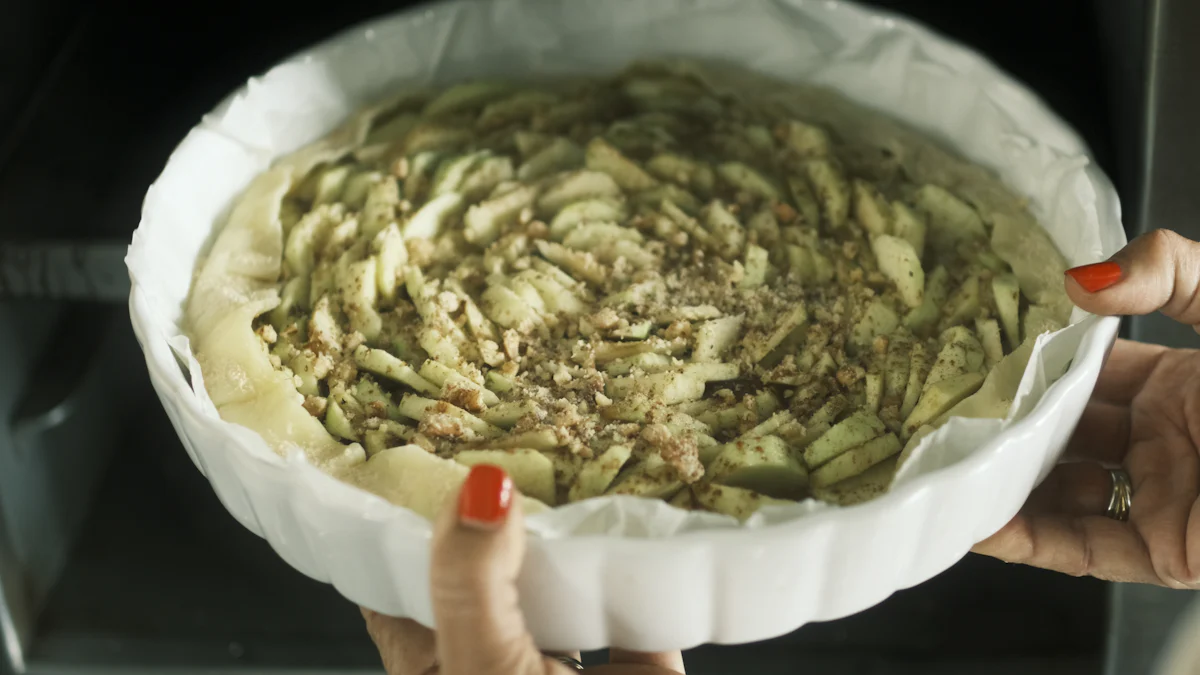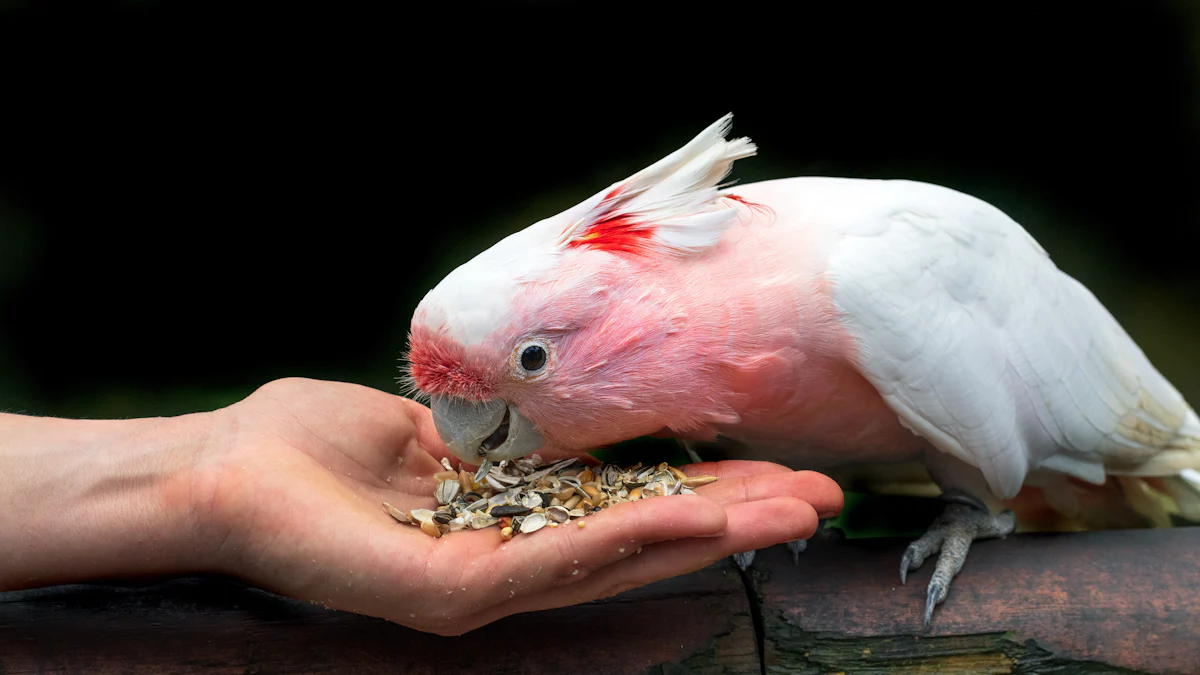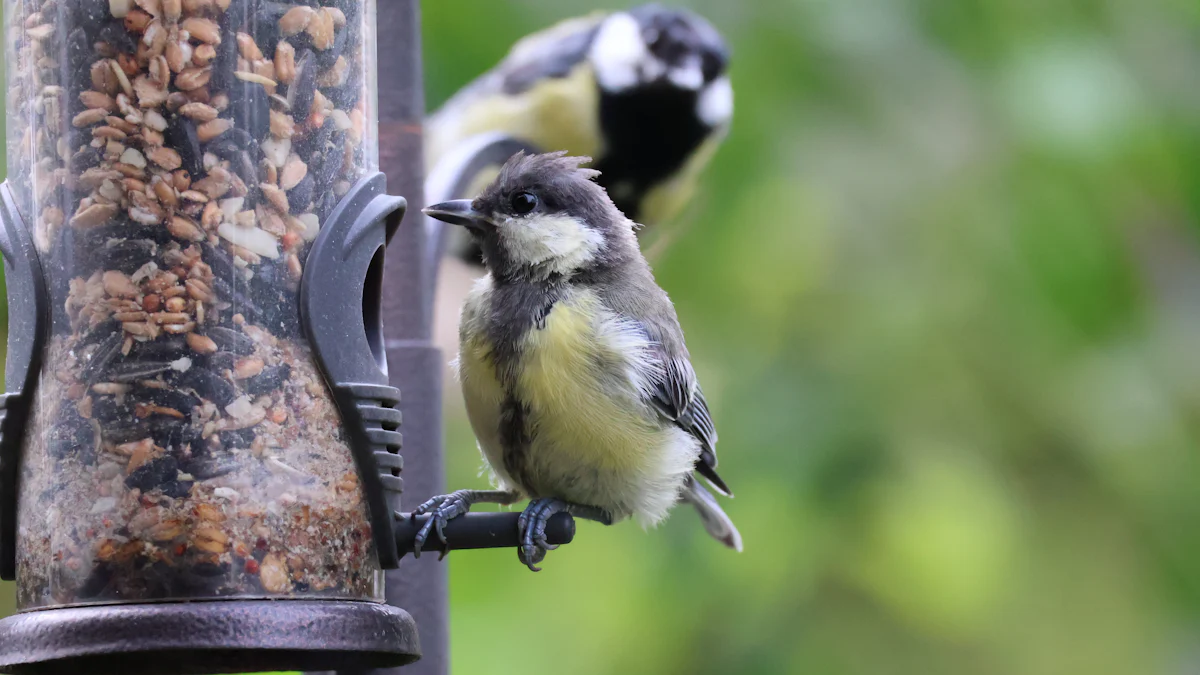
Feeding birds dried mealworms for birds is a great way to support their diet, but a little preparation can make a big difference. Soaking mealworms in warm water for 30 minutes before offering them provides extra hydration, which is especially helpful during dry seasons. Birds find rehydrated mealworms for birds more appealing, and the process couldn’t be easier.
Key Takeaways
- Soak dried mealworms in warm water for 30 minutes. This makes them softer and easier for birds to eat.
- Wet mealworms give birds more water, which helps in dry times. They are also great for birds building nests.
- Add soaked mealworms to other bird food for a healthy mix. This will bring many different kinds of birds to your yard.
Benefits of Preparing Mealworms for Birds
Why Rehydration Matters
Rehydrating dried mealworms makes them softer and easier for birds to eat. This is especially important for nestlings, as they need moist food that’s gentle on their tiny beaks. Soaking mealworms in warm water for about 30 minutes mimics the texture of live insects, which birds naturally prefer. During dry seasons or hot summer months, rehydrated mealworms also provide much-needed hydration. This simple step can make a big difference, particularly when water sources are scarce. You don’t have to soak your dried mealworms before using them, but doing so is a brilliant way to give your garden birds an extra boost of moisture.
Nutritional Benefits for Birds
Mealworms are already a nutritious treat, but rehydrating them enhances their value. They’re packed with essential vitamins like B6 and B12, which support energy production and immune health. Minerals such as potassium, magnesium, and iron contribute to strong bones and overall vitality. These nutrients are especially beneficial during nesting periods when birds need extra energy to care for their chicks. By offering rehydrated mealworms, you’re not just feeding birds—you’re helping them thrive.
How Rehydrated Mealworms Attract More Birds
Rehydrated mealworms are a magnet for a variety of bird species. A study from the Cornell Lab of Ornithology found that birds, especially nestlings, are more likely to eat softened mealworms. Parent birds often seek out moist, easy-to-digest food for their young, making rehydrated mealworms an ideal choice. This practice can also attract species that might otherwise skip your feeder. If you’re looking to bring more feathered friends to your yard, soaking mealworms is a simple yet effective strategy.
Step-by-Step Guide to Rehydrating Mealworms for Birds

Materials Needed
Rehydrating mealworms for birds doesn’t require much. You’ll only need a few basic items:
- A container or bowl to hold the mealworms.
- Dried mealworms.
- Boiling water.
- A sieve or strainer to drain the water.
These simple tools are likely already in your kitchen, making the process quick and hassle-free.
How to Rehydrate Mealworms
Rehydrating mealworms is straightforward. Start by placing the dried mealworms in your container. Pour boiling water over them until they’re completely submerged. Let them soak for at least 30 minutes. Once they’ve softened, use a sieve to drain the water. The mealworms are now ready to serve to your feathered visitors. This method not only softens the mealworms but also ensures they’re clean and free of any impurities.
How Long to Soak Mealworms
Soaking mealworms for 30 minutes is ideal. This duration softens their texture, making them easier for birds to eat. It also enhances their nutritional value by improving the bioavailability of essential nutrients. If you’re feeding nestlings or smaller birds, this step is especially important. Soaking also helps remove any potential pesticide residues, ensuring a safer treat for your garden birds. While you don’t have to soak mealworms before using them, doing so provides extra hydration, which is particularly helpful during dry seasons.
Feeding Tips for Rehydrated Mealworms

Best Ways to Serve Mealworms
Serving rehydrated mealworms in the right way can make all the difference in attracting birds. Birds naturally prefer live insects, so rehydrated mealworms closely mimic the texture and appeal of live ones. To serve them effectively, use feeders that cater to different bird species. Tray feeders work well for ground-feeding birds like robins, while hanging feeders attract perching birds such as chickadees. Placing mealworms in a shallow dish or directly on the ground can also encourage shy species to visit. For the best results, always soak dried mealworms in warm water for 30 minutes before offering them. This step makes them softer and more appealing to your feathered visitors.
Mixing Mealworms with Other Bird Food
Rehydrated mealworms can be even more enticing when mixed with other bird food. Combining them with seeds, suet, or fruits creates a balanced and nutritious meal that appeals to a wider variety of birds. For example, adding mealworms to a mix of sunflower seeds and chopped apples can attract species like bluebirds and cardinals. This approach not only enhances the nutritional value of the meal but also encourages birds to return to your feeder regularly. Offering variety ensures that your garden becomes a favorite spot for birds seeking a well-rounded diet.
When and Where to Feed Mealworms
Timing and location play a big role in feeding mealworms for birds. Early morning is the best time to put out mealworms, as birds are most active and hungry after sunrise. Place feeders in quiet, sheltered areas where birds feel safe from predators. Near shrubs or trees is ideal, as these provide natural cover. During nesting season, offering mealworms close to birdhouses can help parent birds feed their chicks. You don’t have to soak your dried mealworms in water before you use them. However, soaking them in warm water for 30 minutes before you offer them out is a brilliant way to give your garden birds some extra hydration.
Storage Tips for Mealworms for Birds
Proper Storage Methods
Storing dried mealworms correctly keeps them fresh and safe for birds. A cool, dry place is the best option. Avoid areas with high humidity or temperature changes, as these can cause spoilage. For long-term storage, freezing or refrigerating mealworms works well. Use a clean, airtight freezer bag to protect them from moisture and odors. If you prefer storing them in a cabinet, choose a dark, cool spot. A container with a tight-fitting lid will help maintain their quality for months. Proper storage ensures your mealworms stay fresh and ready to feed your feathered friends.
Preventing Spoilage
Spoiled mealworms can harm birds, so it’s important to prevent this. Heat and moisture are the biggest culprits. Always check that your storage container is sealed tightly. If you notice any signs of mold or an unusual smell, it’s time to discard the mealworms. Regularly inspect your storage area for pests, as they can contaminate the food. For added protection, consider splitting your mealworms into smaller portions and freezing them. This way, you only thaw what you need, reducing the risk of spoilage.
Shelf Life of Dried Mealworms
Dried mealworms have an impressive shelf life when stored properly. In a freezer or refrigerator, they can last up to a year. If kept in a cool, dark cabinet, they remain fresh for about six months. Rehydrating mealworms doesn’t extend their shelf life, so only soak what you plan to use immediately. You don’t have to soak your dried mealworms in water before you use them. However, soaking them in warm water for 30 minutes before you offer them out is a brilliant way to give your garden birds some extra hydration. Proper storage ensures you always have a nutritious treat ready for your backyard visitors.
Rehydrating dried mealworms offers many benefits for birds and bird enthusiasts alike. It makes the mealworms softer and easier to digest, which is especially helpful during nesting periods. Studies show that soaking mealworms prevents dehydration in birds, particularly in hot weather.
- Key takeaways include:
- Enhanced palatability and digestibility for birds.
- Increased hydration, especially during dry seasons.
- Better nutrition for parent birds and their chicks.
Bird enthusiasts often praise the simplicity of this method. The table below highlights their feedback:
| Evidence Type | Description |
|---|---|
| Preparation Method | Soaking dried mealworms in water for a few minutes makes them softer and more palatable. |
| Benefits | This practice is particularly beneficial during nesting periods when parent birds need to provide moist food. |
| Acceptance Rate | A study showed that soaking increased acceptance by nestlings, who require softer food for easy consumption. |
You don’t have to soak your dried mealworms in water before you use them. However, soaking them in warm water for 30 minutes before you offer them out is a brilliant way to give your garden birds some extra hydration. Try it today and enjoy the reward of seeing more vibrant bird activity in your yard!
FAQ
How often should I feed birds rehydrated mealworms?
Offer rehydrated mealworms 2-3 times a week. During nesting season, increase frequency to support parent birds and chicks with extra nutrition and hydration.
Can I reuse leftover rehydrated mealworms?
No, discard leftovers after a few hours. Rehydrated mealworms spoil quickly and can harm birds if left out too long.
Do I have to soak dried mealworms before feeding them?
You don’t have to soak dried mealworms. However, soaking them in warm water for 30 minutes gives birds extra hydration and makes the mealworms more appealing.


